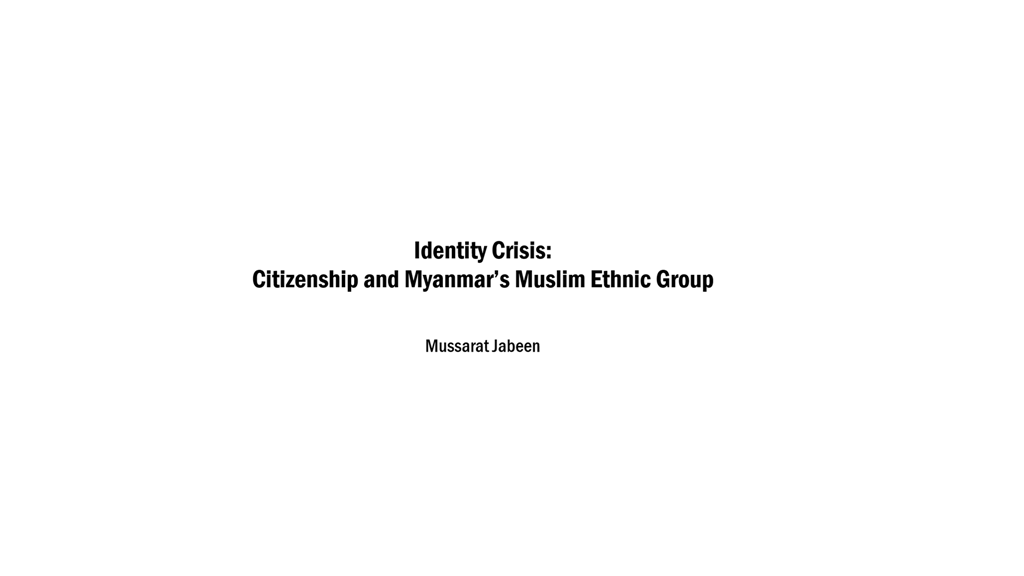
Identity Crisis: Citizenship and Myanmar’s Muslim Ethnic Group
Category: Reports Publisher: Mussarat Jabeen Published: 1 July 2018 Tags: Bangladesh | Myanmar | Pakistan | Rohingya | Rohingya Identity | DownloadAbstract:
Myanmar is one of the most culturally and ethnically diverse state in the world, with almost 135 ethnic groups. Owing to this diversity, the country has been suffering with multiple internal ethnic armed conflicts, including the Rohingys- Rakhine conflict. The Rohingya, a Muslim ethnic group of Myanma, was not included in the officially recognized groups of Myanmar at the time of independence in 1948. They migrated from neighbouring states at that time of history when borders were not demarcated and people frequently move from one place to another. The democratic setup of Burma (1948-62) maintained peace and harmony, but the military regime victimized the ethnic groups, including the Rohingya with its brutal policies forcing a huge number of people to flee into other countries. Above it, the 1982 Citizenship Law did not grant citizenship to the Rohingya as a recognized ethnic group with ties to Myanmar prior to 1824 (the year when Arakan (Rakhine) came under British occupation) and this law confirmed their statelessness. In the current situation, they have become alien as the major ethnic group and the Rakhine Buddhists are forcing them to flee to Bangladesh labeling them “illegal Bengali migrants.” Most of the Rohingyas found it difficult to apply for naturalizing citizenship in the absence of documents that are required as proof of their long-term stay in the country. Above it, they do not speak any of the Burmese language. Losing the status, they have become subject to persecution and discrimination. By law, they require travel permits to visit other countries. The military regime refused to accept back the refugees demanding proofs of ‘genuine citizens.’ In this age of globalization, there is talk of the world without borders, but group like Rohingya reminds us the importance of national borders and the rights of citizenship. There is very little attention paid in World Politics to the plight of such „stateless‟ groups and solution to their problem. The central thesis of this paper is that assimilation of Roghina into Myanmar is made all the more difficult because they are made out to be just as Bengali and „foreigners‟ and secondly the religious colouring has been given to the conflict, highlighting the Muslim character of Roghinga and active involvement of the Buddhist monks in inciting riots against Roghinga are two dynamics that make the future of Roghinga grim in Myanmar.
Back

